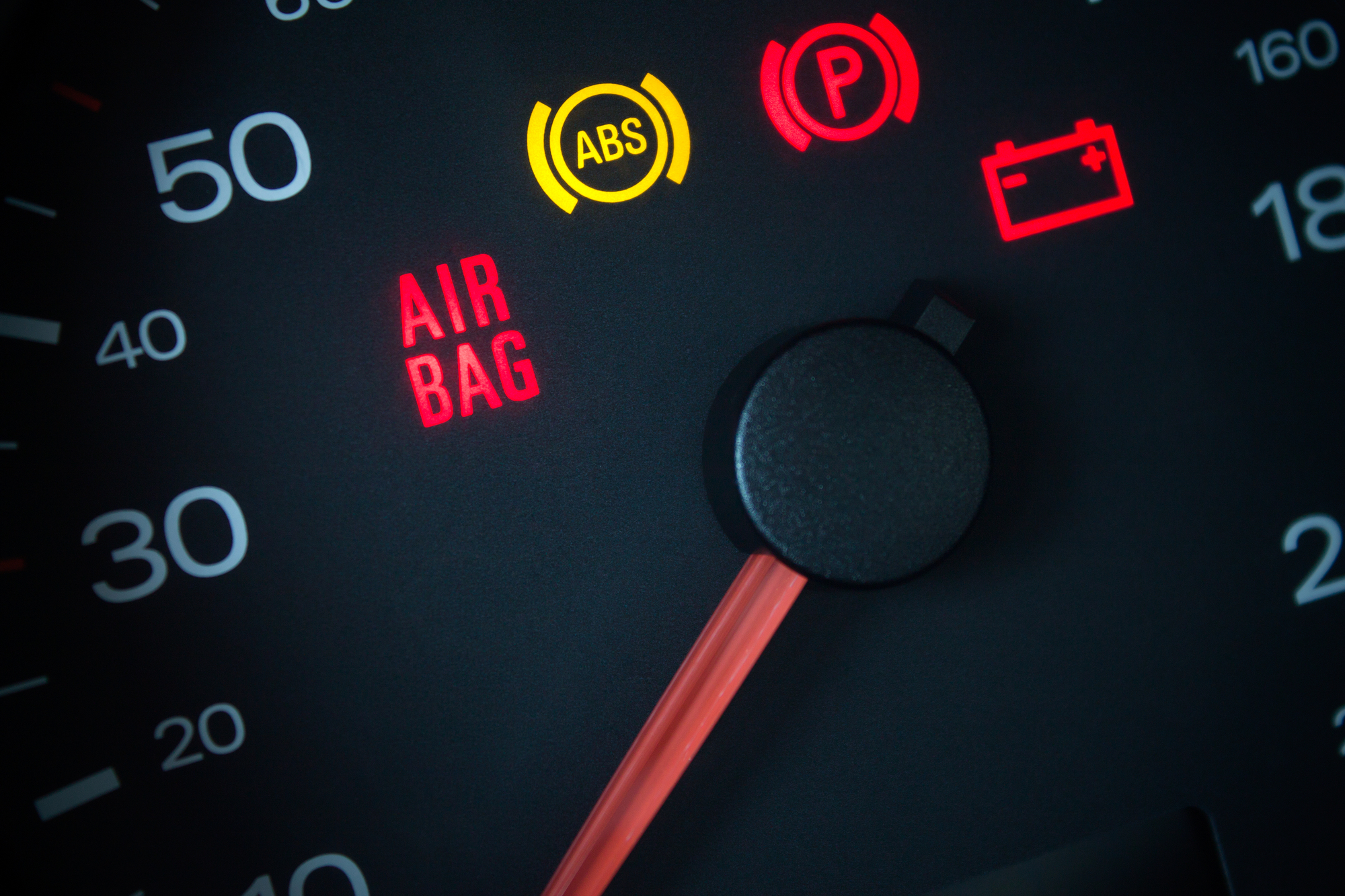ABS stands for anti-lock brake system. The ABS on a car helps the tires maintain contact with the road when you put on the brakes and prevents the wheels from locking up, which can lead to uncontrollable skids. The ABS light (yellow, orange, or amber) typically comes on briefly when you start the car as part of a self-test system check. If the light remains on, it means that something isn’t working in the system and that the car should be shut down. Read on for additional information about the ABS on a car.
The Main Purpose of ABS
The main purpose of ABS is to enhance control of the vehicle during intense braking, especially under challenging conditions like driving on slick or loose surfaces that can cause skidding. It’s often assumed that the ABS assists with stopping distance. However, this isn’t necessarily the case.
Anti-lock or Anti-skid braking became more commonplace on trucks and cars in the early 1980s/1990s as a beneficial step toward improving driver control and safety.
ABS Self-Test
The ABS on a car does a self-test when you turn on the ignition. Once the vehicle is started, the ABS light comes on briefly, and if the computer detects a problem, the light will remain on.
The ABS Warning Light
If the warning light comes on while you’re driving, it signifies that the ABS isn’t working correctly. If the light stays on, you’ll need to have a mechanic inspect the ABS.
Potential ABS Problems
With ABS, sensors affixed to each wheel track the speed at which the wheels are turning. If one wheel is turning slower than the others while braking, it’s an indication that it’s locking up, which could result in loss of steering control. The ABS is designed to intervene during skidding by quickly “pumping” the brakes at the wheel that’s locking up, letting it spin so that the driver retains steering and braking control.
Factors that can cause ABS problems include:
- An ABS controller that stops working
- A blown fuse in the ABS system
- A wheel-speed sensor that’s covered with road grime or damaged
- A broken wire between the ABS controller and sensors
- A bad valve or pump (used to apply brake fluid pressure to all wheels to prevent locking)
ABS and Brake System Light
If the ABS and brake system light come on simultaneously, it’s a sign of a major problem with the braking system and that the vehicle is unsafe to drive. If this is the case, you’ll need to have the entire brake system checked out by a certified mechanic.
Contact us today if you need the ABS on a car checked.






